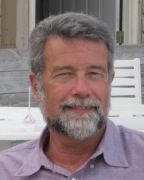
Perry Hackett Ph.D hacke004@umn.edu
Bio:
An army vet who traveled the world, Dr. Hackett eventually settled down in the San Francisco Bay Area of Silicon Valley, where he trained in Physics and Biophysics. He has been with the University of Minnesota in the Department of Genetics, Cell Biology and Development since 1980 and is a member of the Cancer Center as well as the Center for Genome Engineering. Dr. Hackett is a leading biotech entrepreneur in the Twin Cities, cofounding the two genetic engineering companies of Discovery Genomics and Recombinetics. His academic research focuses on molecular genetics with the goal of human gene therapy. The Sleeping Beauty Transposon System was invented in his lab as a way of delivering genes to vertebrates and is in clinical trials for treating cancer. Other interests include: applications of gene engineering to alleviate food security issues, gene targeting, and honey badgers.
Recent Publications:
Fahrenkrug, S.C., Blake, A., Carlson, D.F., Doran, T., Van Eenennaam, A., Faber, D., Galli, C., Hackett, P.B., Li, Ning, Maga, E.A., Murray, J.D., Stotish, R., Sullivan, E., Taylor, J.F., Walton, Wheeler, M., Whitlaw, B., Glenn, B.P. (2010). Precision genetics for complex objectives in animal agriculture. J. Animal Sci. (in press) http://www.ncbi.nlm.nih.gov/pmc/articles/PMC3683964/
Hackett, P.B., D.A. Largaespada and L.J.N. Cooper (2010) A transposon and transposase system for human application. Mol. Ther. 18: (in press) http://www.ncbi.nlm.nih.gov/pmc/articles/PMC2862530/
Aronovich, E.L., J.B. Bell, S.A. Kahn, L.R. Belur, R. Gunther, B. Koniar, P.A. Schachern, J. Parker, C.S. Carlson, C.B. Whitley, R.S. McIvor, P. Gupta and P.B. Hackett (2009). Systemic correction of storage disease in MPS I NOD/SCID mice using the Sleeping Beauty transposon system. Mol. Ther. 17: 1136-1144. http://www.ncbi.nlm.nih.gov/pmc/articles/PMC2829452/
Singh, H., P.R. Manuari, S. Olivares, N. Dara, M.J. Dawson, H. Huls, P.B. Hackett, D,B. Kohn, E.J. Shipall, R. Champlin, and L.J.N. Cooper (2008). Redirecting specificity of T-cell populations for CD19 using the Sleeping Beauty System. Cancer Res. 68: 2961-2971. http://www.ncbi.nlm.nih.gov/pubmed/18413766
Elena Aronovich Ph.D arono001@umn.edu
Bio:
In 1992, she migrated to the US. Her lifelong interest in lysosomal disease led her to an MPS conversation at the U of M. Here, she has specialized in the study of MPS I, II, and VII. She has recently led a breakthrough in the delivery of transgenes to immunocompetent mice. Dr. Aronovich's other interests including tango dancing.
Recent Publications:
Daniel A. Wolf; Leah R. Hanson; Elena L. Aronovich; Zhenhong Nan; Walter C. Low; William H. Frey; R. Scott McIvor Lysosomal enzyme can bypass the blood-brain barrier and reach the CNS following intranasal administration Molecular Genetics and Metabolism. 2012;106(1):131-134. http://www.sciencedirect.com/science/article/pii/S1096719212000315
Elena L. Aronovich; R. Scott McIvor; Perry B. Hackett The Sleeping Beauty transposon system: A non-viral vector for gene therapy Human Molecular Genetics. 2011;20:R14-R20. https://doi.org/10.1093/hmg/ddr140
Kendra A. Hyland; Erik R. Olson; Karl J. Clark; Elena L. Aronovich; Perry B. Hackett; Bruce R. Blazar; Jakub Tolar; R. Scott Mcivor Sleeping Beauty-mediated correction of Fanconi anemia type C Journal of Gene Medicine. 2011;13(9):462-469. http://onlinelibrary.wiley.com/doi/10.1002/jgm.1589/abstract;jsessionid=9D1A83A4B3BE29208153B0321C0F8F5C.d04t03
Jason B. Bell; Elena L. Aronovich; Jeffrey M. Schreifels; Thomas C. Beadnell; Perry B. Hackett Duration of expression and activity of sleeping beauty transposase in mouse liver following hydrodynamic DNA delivery Molecular Therapy. 2010;18(10):1796-1802. http://www.nature.com/mt/journal/v18/n10/full/mt2010152a.html
Jeff Reineke jreineke@umn.edu
Bio:
Dr. Jeffrey W. Reineke holds a B. S. degree in Biology with a minor in Chemistry from the California State University, Los Angeles, and has held analytical chemist positions at BOC/Edwards, Forest Pharmaceuticals, and BASF. For several years thereafter, he was employed in the field of forensic science, after which he pursued a degree in medicine. In 2012, Dr. Reineke, D. O., graduated from the Edward Via College of Osteopathic Medicind in Blacksburg, VA. His research interests include therapeutic gene delivery, medical device and procedural development, and the utilization of quantum dots for cellular mechanism elucidation. His outside interests include hiking, hunting, fishing, and outdoor activities with his children.
Bryan Hall hall0336@umn.edu
Undergrad Volunteers
Chelsea
Shayan
Allicia Gunderman gunde397@umn.edu
Collaborators
Reineke Lab
- Zach
- Hally
- Yogesh